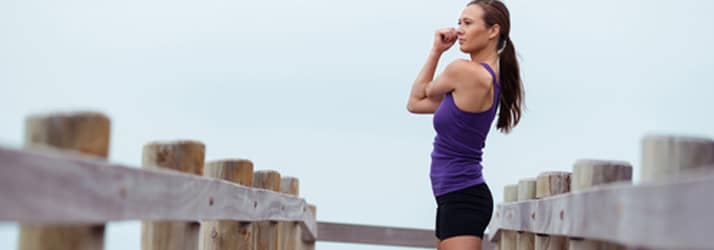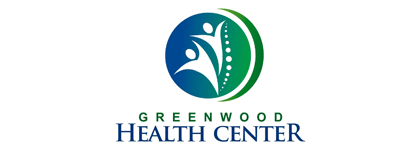Stretching: Facts and Fiction
Stretching: Facts and Fiction

Stretching: much ado about nothing? Or is it a primary aspect of keeping you healthy and well balanced? If you have ever competed in sports, participated in an exercise class, or even taken a Phys Ed class, there was almost assuredly some level of emphasis placed on “warming up.” Now let us take a moment to dissect that term and its applications to activity. Is your opinion of warming up taking a light jog for a few minutes before said activity? Is it an intense stretching session consisting of complex contortions and holds? Or is it a combination of the two, wrapped in a dynamic shell of movement patterns mimicking those of the ensuing activity? Before you can appropriately decide, you must first understand the nature of your activity. More importantly, you must then apply the correct timing when it comes to stretching before/after any physical activity. Although the research can be seemingly contradictory, I plan to lay it out in a way that simply targets the correct routine in a way that is very easy to understand and remember.
First it is imperative that I relay a few facts about muscle tissue and its anatomy. First and foremost, when it comes to stretching your muscle, more is not always better. A useful analogy to this can be drawn from tying your shoes. You may think of stretching your muscles as loosening the strings on your shoes. What’s the result of this? The looser your shoes, the more unstable and prone to injury you become. The same can be said for working muscles. Stretch too much and you risk instability of the joint and surrounding tissue and you put yourself in danger of injury. On the contrary, if your shoestrings (or muscles) are too tightly wound, you will quickly become uncomfortable and sore no matter what you are doing. This must mean, finally, that there is some optimal length of the muscle that will allow for maximal performance and minimal discomfort.
So, how do you know when you have reached the optimal length? If you read my previous article detailing the excessive amount of time spent sitting by most of us, then it becomes obvious that the majority of the population suffers from over-contracted (tight) muscles in the legs, hips, and back. I will never discourage someone from being involved in a consistent stretching routine; however, there is an appropriate time to stretch in order to increase range of motion and mobility and a separate time to prepare the muscles for physical activity. Always consult with a health professional before beginning an exercise routine, but this guide should give you the general principles of safe and effective stretching routines.
Stretching in preparation for physical activity (the most commonly utilized timing of stretching, but often the most misused)
The majority of us believe that stretching before physical activity will reduce risk of injury, enhance performance, or both. While this can be true, the most important part of muscular injury risk reduction is in the elasticity of the muscle. In general this means literally “warming up” the muscle tissue in order for it to not only contract optimally, but also to give and stretch properly. Take two rubber bands, put one in the freezer, and the other in the hot sun. Which one will more easily stretch and contract? The one that absorbed warmth, of course. So what is the best method to increase temperature of the muscles? USE THEM! There are a variety of dynamic stretches that can be performed to ensure the muscles are at optimal length and temperature, and therefore elasticity and performance. Here are two videos that explain the benefits of dynamic stretching and provides several examples of this type of stretch.
Stretching to increase range of motion (most appropriate for rehabilitating injury or enhancing recovery following physical activity)
This consists of the most widely recognized form of stretching in holding a muscle in a stretched position for a period of time, usually 10-30 seconds. What is important about this form of stretching is that it can cool down, literally, the muscle tissue. Remember the importance of warming muscle tissue before activity? The cooling effect this “static” stretching can put you at risk for injury when performed, especially to excess, before intense physical activity.Not only this, but the muscles often become weaker after a static OVERstretching (think back to the shoestring analogy). However, this does NOT mean that this type of stretching is not extremely important or beneficial in any way. Holding a static stretch can be very beneficial in recovering from injury, improving range of motion, and improving overall tissue quality when instructed by a professional.
It is important when beginning a stretching routine to begin gently as you do not want to further injure any tissue. Gradually ease into stretching further and listen to your body to tell you when to stop. As my father always told me: “If it hurts, don’t do it!” There may, however, be a resulting mild discomfort following an intense stretching routine. This is simply from pushing your body and its components past a point they are used to pushing. Our office is always happy to answer any stretching, exercise, or other fitness related questions you may have. I hope you have enjoyed this very brief overview of the importance of not only timing of stretching, but also the variety you choose. Thanks for stopping by!
OFFICE HOURS
Monday
8:00am - 6:00pm
Tuesday
1:00pm - 5:00pm
Wednesday
8:00am - 6:00pm
Thursday
1:00pm - 5:00pm
Friday
8:00am - 12:00pm
Saturday
Closed
Greenwood Health Center
450 South State Road 135 Suite B
Greenwood, IN 46142
(317) 889-8998




